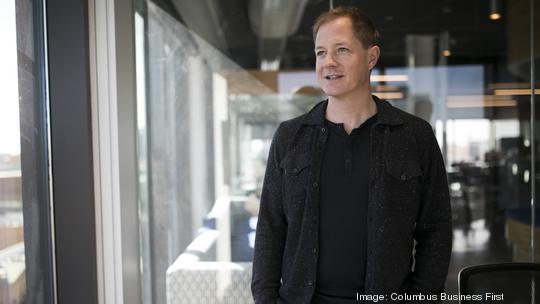
Silicon Valley Bank was built with capital raised by startups to be the bank for startups, and its failure hurts the global tech industry well beyond the San Francisco Bay bubble, said Columbus venture capitalist Chris Olsen.
Olsen, co-founder and partner at Drive Capital LLC, also defended the controversial action of the federal government to guarantee all deposits of SVB customers, despite an estimated 85% to 95% being uninsured. The FDIC typically guarantees up to $250,000 in a single account – barely more than one week's payroll for a tech company employing 100.
"I don't view this as a bailout," Olsen said. "(The decision) hopefully stems the tide of what would have been literally millions and millions of jobs that would have been lost in America over a seven-day period of time."
Like VC firms across the country, Drive Capital worked through the weekend to help portfolio companies and the firm itself move what funds they could before they were frozen, and find short-term capital to make it through the week, as Columbus Inno reported. The crisis was averted Sunday evening when the FDIC, Federal Reserve and U.S. Treasury jointly announced SVB deposits would be available starting Monday.
A second bank in New York had failed by then, and others were starting to wobble.
"It started to ripple through the share price of regional banks across America," Olsen said. "I think what the Fed did was absolutely the right move, which was really to shore up confidence behind the entire U.S. banking system.
"This was a massive shock to the overall system."
Taxpayer dollars aren't used in covering the deposits. The FDIC is ensuring liquidity of deposits until the bank's assets are sold. Any losses come out of the Deposit Insurance Fund that has built up through fees that all banks pay. The agency would make that up by increasing those fees – and banks could theoretically pass that cost to customers, but must balance that against the need to compete for those customers.
In the few cases when a bank failure required dipping into the insurance fund in the past, the amount was later repaid with interest.
SVB at year's end had $211 billion in assets, more than its $173 billion in deposits (which are liabilities on a balance sheet), according to its annual report. The trouble is most of those are illiquid – loaned out to other companies or invested in long-term instruments like U.S. Treasury bonds.
"Silicon Valley was not a risky bank," Olsen said. "This was a very safe bank that had the validation of top credit ratings from every credit rating agency. It had a 40-year track record. It had a very un-risky balance sheet."
This year, rising interest rates and inflation created a cash crunch for startups, so their withdrawals were increasing at the same time those interest rates caused the value of the bank's Treasury holdings to drop. As the Silicon Valley Business Journal reported, SVB had to sell some bonds at a loss to meet the withdrawal demand and spooked investors when it said it needed to raise capital.
The bank's error was poor communication, Olsen said.
"Frankly, there were a number of venture capitalists who overreacted on social media to what should have been a reduction in earnings, and started a run on the bank," he said. "I don’t think it was justified, in hindsight.
"Because there was a fevered frenzy that created this run, it created a massive liquidity crunch."
Even if a customer doesn't want a bank run, he said, once one snowballs, every account holder is caught in the "prisoner's dilemma."
"If everyone had cooperated and not overreacted, it would have been fine,” Olsen said. “(But) if you’re the last one to pull your funds, there’s a chance you won't get any of your funds."
SVB understood startups like no other, he said. Its unique structure helped it lend money to pre-revenue tech startups that traditional banks would have turned away.
"Many other banks have tried to be as strong a partner to startups and they’ve never been able to get there," he said. "They were purpose-built to help these companies.
"The loss of Silicon Valley Bank will be a hindrance to the startup community around the world."






